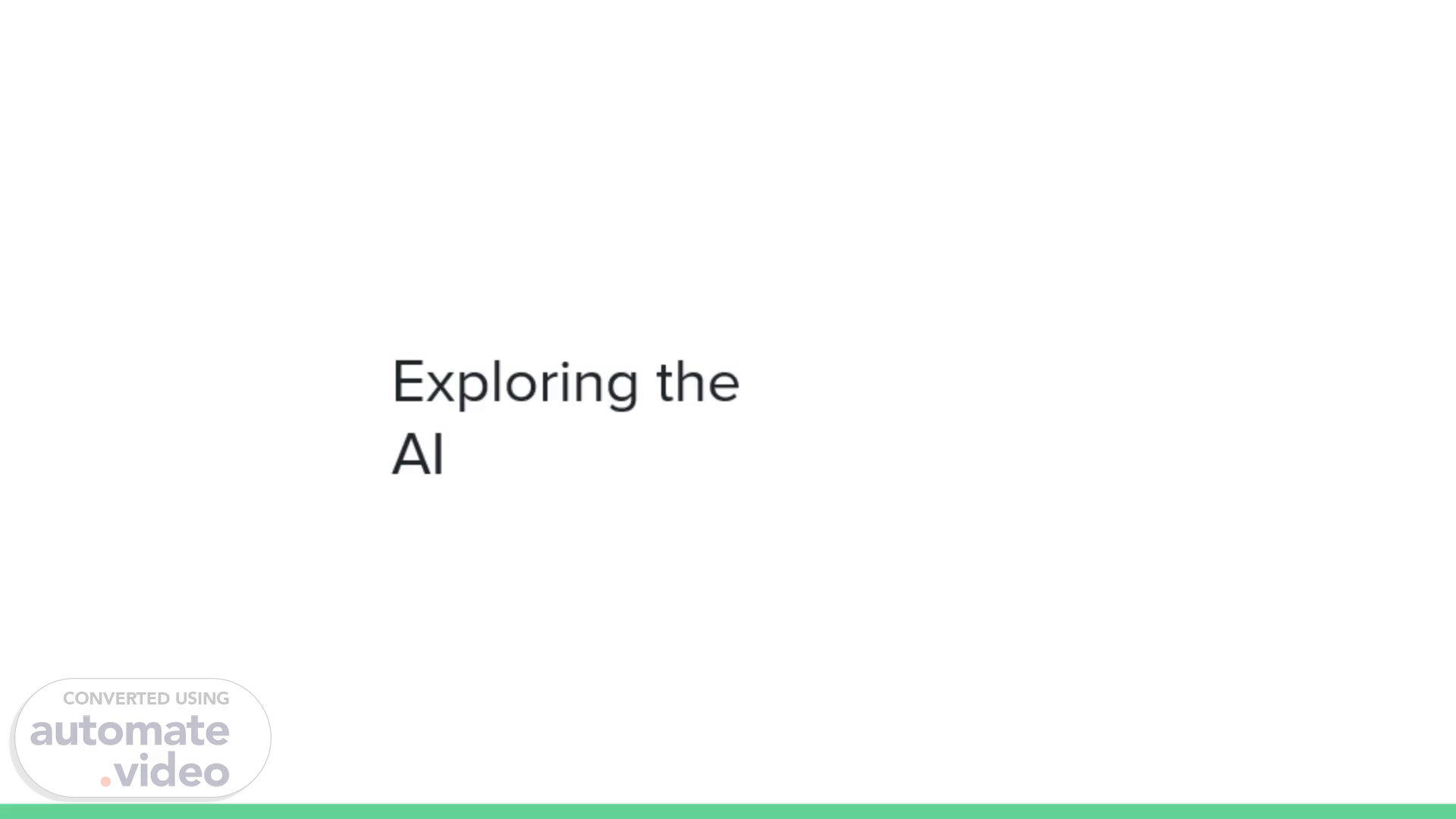
PowerPoint Presentation
Scene 1 (0s)
Exploring the Future of AI.
Scene 2 (7s)
Agenda. 1. Introduction to AI. 2. Types of AI. 3.
Scene 3 (35s)
Introduction to AI. Definition of AI: Artificial Intelligence refers to the simulation of human intelligence processes by machines, such as learning, reasoning, and self-correction. Evolution of AI: AI has evolved from rule-based systems to neural networks and deep learning, enabling more complex decision-making and problem-solving abilities. Current Applications of AI: AI is currently used in various fields, including healthcare, finance, transportation, and entertainment, to automate tasks, analyze data, and improve efficiency..
Scene 4 (1m 1s)
Types of AI. Narrow AI: Narrow AI, also known as Weak AI, is designed for specific tasks and operates within a limited domain, such as image recognition or virtual assistants. General AI: General AI, or Strong AI, possesses human-like cognitive abilities and can perform any intellectual task that a human can do. Superintelligent AI: Superintelligent AI surpasses human intelligence and capabilities, potentially leading to unprecedented advancements or existential risks..
Scene 5 (1m 26s)
[Audio] (A-I ) technologies such as Machine Learning, Neural Networks, and Natural Language Processing are fundamental to (A-I ) applications. Machine Learning allows systems to improve performance based on data, Neural Networks mimic the brain's processing, and Natural Language Processing enhances human-computer interaction through language understanding..
Scene 6 (1m 53s)
[Audio] Ethical considerations in (A-I ) play a significant role in shaping responsible (A-I ) development and deployment. Addressing bias, privacy concerns, and establishing accountability are key pillars in ensuring ethical (A-I ) outcomes. By prioritizing fairness, data protection, and transparency, organizations can build (A-I ) systems that align with societal values and ethical standards..
Scene 7 (2m 24s)
[Audio] The integration of (A-I ) and automation presents both opportunities and challenges for organizations and society. While (A-I ) can enhance efficiency and productivity, it also raises concerns about job displacement and workforce transitions. By proactively addressing these challenges and focusing on reskilling initiatives, organizations can leverage (A-I ) to drive innovation and sustainable growth..
Scene 8 (3m 0s)
[Audio] (A-I ) technology has transformative potential in healthcare, revolutionizing diagnostic processes, treatment approaches, and healthcare operations. By enhancing diagnostic accuracy, personalizing treatments, and optimizing management tasks, (A-I ) can improve patient care quality and healthcare system efficiency..
Scene 9 (3m 32s)
[Audio] (A-I ) applications in finance, such as algorithmic trading, fraud detection, and risk management, are reshaping the industry landscape. By leveraging (A-I ) technology to optimize trading strategies, enhance fraud detection, and improve risk assessment, financial institutions can achieve greater efficiency, security, and competitive advantage..
Scene 10 (4m 4s)
[Audio] (A-I ) integration in education is transforming teaching and learning practices, offering personalized learning experiences, student support services, and administrative efficiencies. By leveraging (A-I ) technology for personalized learning platforms, student assistance tools, and administrative automation, educational institutions can enhance student outcomes and streamline administrative processes..
Scene 11 (4m 37s)
[Audio] (A-I )'s impact on creativity extends to diverse fields such as art, music, and literature, where (A-I ) algorithms participate in artistic creation, musical composition, and literary text generation. The fusion of (A-I ) technology with creative disciplines opens up new possibilities for innovation and collaboration in creative expression..
Scene 12 (5m 9s)
[Audio] Future trends in (A-I ) focus on enhancing transparency, accountability, and technological advancements. Explainable (A-I ), (A-I ) regulation frameworks, and the exploration of Quantum (A-I ) represent key developments shaping the future of (A-I ). By prioritizing ethical guidelines and embracing emerging technologies, the (A-I ) landscape can evolve sustainably and responsibly..
Scene 13 (5m 41s)
[Audio] Navigating the future of (A-I ) involves addressing complex challenges related to transparency, security, and the potential for technological singularity. By promoting transparency in (A-I ) operations, bolstering security measures, and engaging in discussions about ethical (A-I ) development, stakeholders can proactively manage risks and ensure the responsible advancement of (A-I ) technology..
Scene 14 (6m 12s)
[Audio] In conclusion, shaping the future of (A-I ) demands a strategic and proactive approach to address ethical, technical, and societal challenges. By embracing responsible (A-I ) practices, fostering innovation, and engaging in collaborative initiatives, stakeholders can work towards a future where (A-I ) contributes positively to society and fosters human progress..